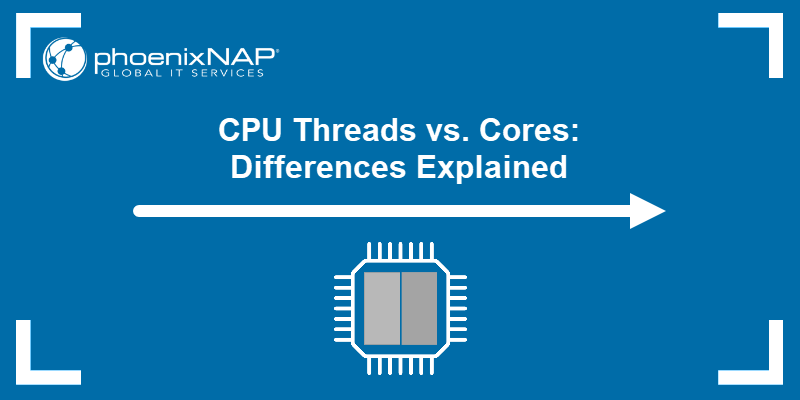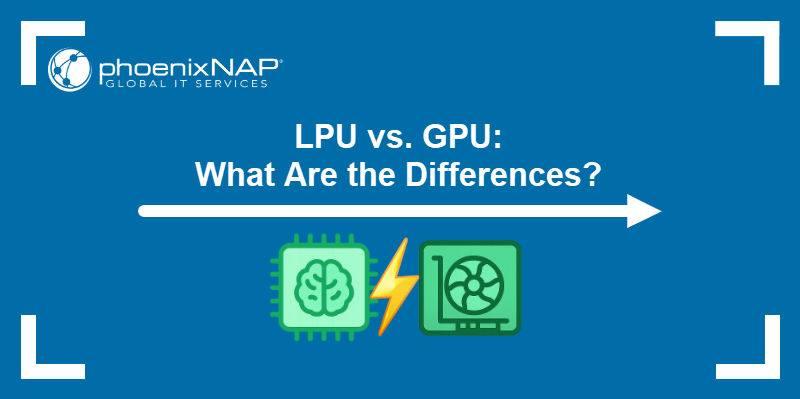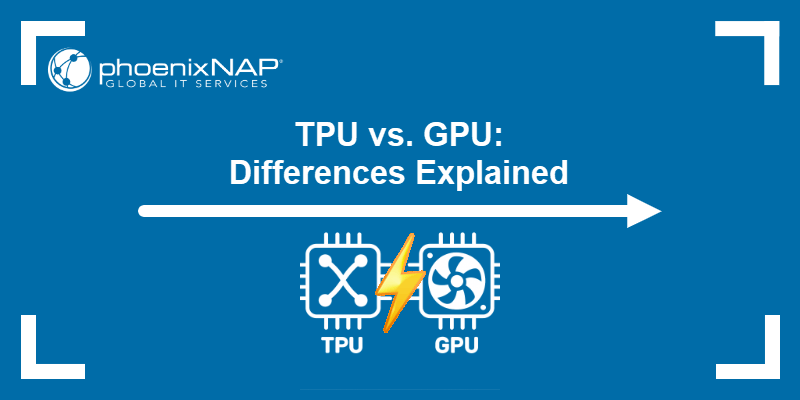APUs and GPUs play a central role in modern computing, powering everything from everyday laptops to high-performance gaming rigs and data centers. While APUs are often favored in budget-friendly or compact systems, GPUs dominate in scenarios that demand raw graphical power or heavy parallel workloads.
This article compares the two by examining their strengths, limitations, and ideal use cases to help you determine which option best fits your needs.
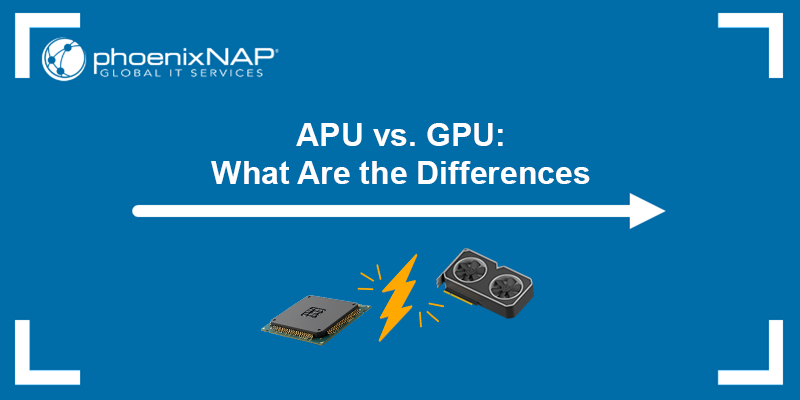
What Is APU?
An APU (Accelerated Processing Unit) is a processor that integrates a CPU (Central Processing Unit) and GPU (Graphics Processing Unit) on a single chip. This design improves efficiency by allowing the same component to handle both general computing and graphics tasks.
APUs were first introduced by AMD to provide better performance than standard CPUs with basic integrated graphics, which made them suitable for multimedia, light gaming, and parallel processing workloads.
Originally aimed at PCs, consoles, and mobile devices, some APUs have since evolved into enterprise-grade solutions. AMD has expanded particular APUs into servers, workstations, AI, and high-performance computing (HPC) environments.
How Does APU Work?
An APU combines the processing power of a CPU and GPU within a single architecture and allows both components to share resources and work more efficiently. Instead of relying on a separate graphics card, the integrated GPU handles rendering and visual tasks, while the CPU manages general computing operations.
This close integration reduces latency, improves data transfer speeds, and optimizes overall performance. It is especially useful in systems with limited space or power capacity.
APU Use Cases
APUs are versatile and used in a wide range of devices, from personal systems to enterprise workloads. Their integrated design offers a cost-effective and energy-efficient solution where a dedicated GPU may not be necessary.
Common APU use cases include:
- Personal computers. Offer smooth performance for everyday tasks like browsing, streaming, and office applications without the need for a separate GPU.
- Casual gaming. APUs provide enough graphical power for light to moderate gaming at lower resolutions and settings.
- Laptops and mobile devices. They improve power efficiency and battery life while supporting multimedia and graphics processing.
- Gaming consoles. Custom AMD SoCs with powerful integrated GPU blocks are used in console gaming systems to deliver optimized gaming performance in a compact form.
- Enterprise and AI workloads. Newer APUs support high-performance computing (HPC) and AI-driven applications, and they are used in servers and data centers for specific integrated packaging and energy/latency benefits.
APU Advantages
APUs offer a balanced approach between performance, efficiency, and cost, making them suitable for a variety of scenarios. They integrate CPU and GPU capabilities to eliminate the need for additional hardware in many cases.
The key advantages of APUs include:
- Cost-effectiveness. APUs provide decent graphics performance without requiring a separate GPU.
- Energy efficiency. They consume less power compared to systems with both a standalone CPU and GPU.
- Compact design. Ideal for small form-factor PCs, laptops, and mobile devices.
- Improved integration. Faster communication between CPU and GPU components results in smoother performance for multimedia and graphics tasks.
- Enterprise scalability. High-end APUs bring advanced capabilities to servers and AI workloads.
APU Disadvantages
Despite their benefits, APUs are not always the best choice for performance-intensive tasks. Their integrated design has limitations compared to using a powerful dedicated GPU.
Common disadvantages of APUs include:
- Lower graphics performance. They struggle with modern AAA games or heavy 3D rendering compared to dedicated GPUs.
- Limited upgrade potential. Users who seek significant graphics improvements may still need a discrete GPU.
- Memory sharing. APUs use system RAM for graphics processing, which reduces available memory for other tasks.
- Thermal constraints. High-performance APUs can generate significant heat, which requires better cooling in compact systems.
- Niche enterprise support. While newer APUs target servers and HPC, traditional CPU-GPU setups remain dominant for top-tier performance.
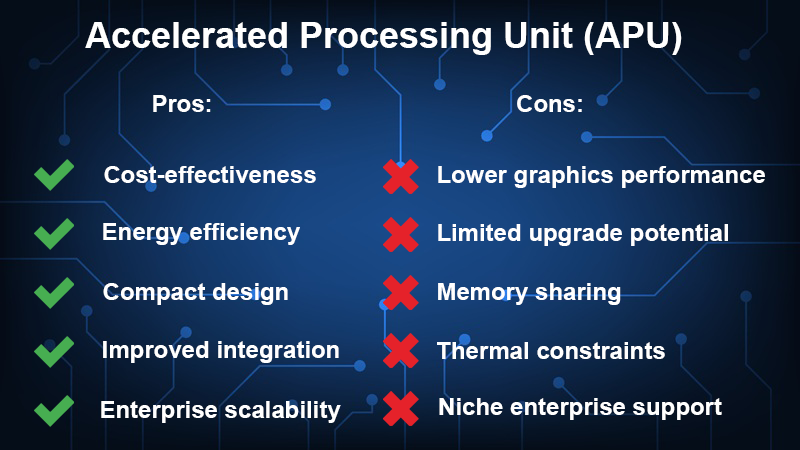
What Is GPU?
A Graphics Processing Unit (GPU) is a specialized processor designed to handle complex graphics and image rendering tasks. Unlike a CPU, which focuses on general-purpose computing, a GPU excels at parallel processing.
Therefore, GPUs are ideal for workloads that involve rendering visuals, running simulations, and handling large data sets. Initially built for gaming and visual applications, GPUs are now widely used in AI, machine learning, data analytics, and high-performance computing (HPC) environments.
How Does GPU Work?
A GPU processes data using thousands of small cores optimized for handling multiple tasks simultaneously. While a CPU focuses on sequential execution, a GPU's architecture is designed for parallel computing.
This ability enables a GPU to perform repetitive calculations efficiently, which is crucial for rendering graphics and processing large data streams. GPUs are essential for gaming, as well as for AI model training, 3D modeling, video rendering, and scientific simulations.
GPU Use Cases
Modern GPUs go far beyond gaming. They are used to power industries that rely on high-speed computation and real-time data processing.
Common GPU use cases include:
- Gaming and 3D rendering. GPUs deliver realistic visuals, smooth frame rates, and support for advanced effects.
- Artificial intelligence (AI) and machine learning. Train and run models faster by handling massive datasets efficiently.
- Data analytics. Accelerate large-scale processing for business intelligence and scientific research.
- Video editing and content creation. Enable faster rendering, encoding, and playback for high-resolution media.
- High-performance computing (HPC). Support simulations, modeling, and complex calculations used in engineering, weather forecasting, and physics research.
GPU Advantages
GPUs provide unmatched processing power for graphics-heavy and data-intensive tasks. Their ability to handle parallel computations gives them a significant performance advantage over CPUs in specific workloads.
Key advantages of GPUs include:
- High computational power. Ideal for tasks that require large-scale parallel processing.
- Superior graphics performance. Provide high-quality visuals and smooth performance for gaming and multimedia.
- Accelerated AI and HPC. Essential for workloads involving AI, data analytics, and scientific simulations.
- Hardware optimization. Designed for maximum efficiency in rendering and parallel computations.
- Scalability. High-end GPUs can be combined in clusters for advanced enterprise workloads.
GPU Disadvantages
While GPUs are powerful, they are not always the most practical solution. Their cost, power consumption, and hardware requirements can limit their usefulness in some environments.
Common GPU disadvantages include:
- High cost. Powerful GPUs are significantly more expensive than APUs or CPUs with integrated graphics.
- Increased power consumption. Require more energy, leading to higher operational costs and potential thermal issues.
- Size and cooling needs. High-end GPUs often need larger cases and advanced cooling solutions.
- Limited general-purpose performance. Less efficient than CPUs for tasks that require sequential processing.
- Compatibility constraints. Not all systems support powerful discrete GPUs, especially compact devices.
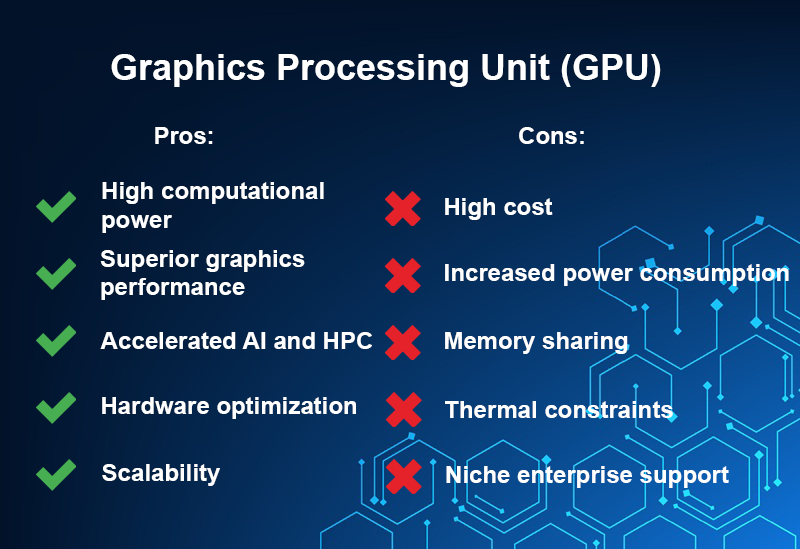
APU Vs. GPU: Differences
An APU integrates both a CPU and a GPU on a single chip, while a GPU is a dedicated graphics processor designed for high-performance computing and rendering tasks. The table below presents the key differences between the two, helping you decide on the best fit for your needs:
| Feature | APU (Accelerated Processing Unit) | GPU (Graphics Processing Unit) |
|---|---|---|
| Primary role | Combines CPU and GPU for balanced performance. | Dedicated processor for graphics and computation. |
| Performance | Good for everyday tasks and light gaming. | Superior performance in demanding workloads. |
| Cost | Budget-friendly, eliminates need for a separate GPU. | Higher cost, especially for high-end models. |
| Power efficiency | More energy-efficient; ideal for compact devices. | Consumes more power and produces more heat. |
| Use cases | Casual gaming, streaming, office work, small systems. | AAA gaming, AI, 3D rendering, data analytics, HPC. |
| Scalability | Limited upgrade potential. | Highly scalable, supports multi-GPU setups. |
| Memory usage | Shares system RAM for graphics. | Has dedicated VRAM for better performance. |
| Best for | Budget systems, laptops, all-in-one devices. | High-performance desktops, servers, and workstations. |
APU vs. GPU: How to Choose?
Choosing between an APU and a GPU depends on your budget, workload, and performance requirements. Use the guidelines below to determine which option best fits your needs.
Choose an APU if:
- You need a budget-friendly system for everyday computing, browsing, and streaming.
- You want a compact device like a laptop, small form-factor PC, or all-in-one system.
- You play casual or older games and do not require high-end graphics.
- You prefer lower power consumption and less heat generation.
Choose a GPU if:
- You play modern AAA games or use applications requiring high-resolution rendering.
- You work with AI, machine learning, or data analytics that require heavy parallel processing.
- You do video editing, 3D modeling, or scientific simulations where performance is critical.
- You want future scalability and plan to upgrade your system for better performance.
Conclusion
This article explained the differences between an APU and GPU, presented their pros and cons and use cases. Understanding the differences helps you choose the right hardware to balance performance and efficiency. Next, learn the difference between CPU and GPU or see how to check CPU temperature on Linux.
